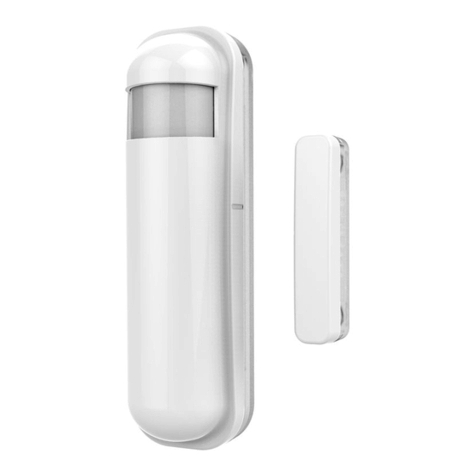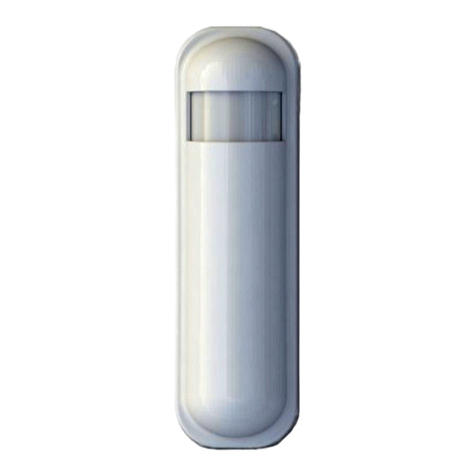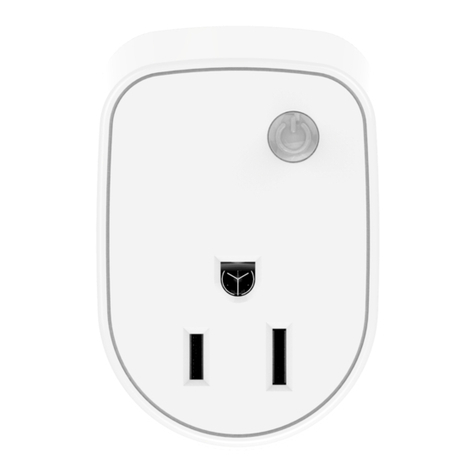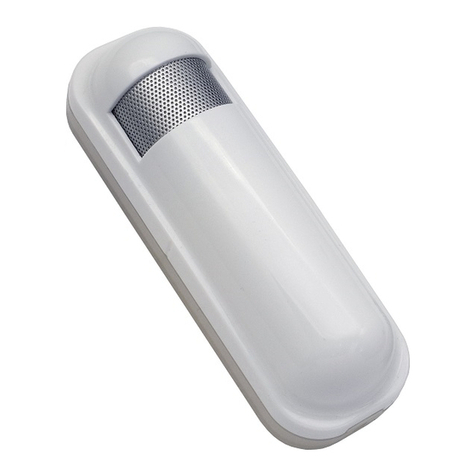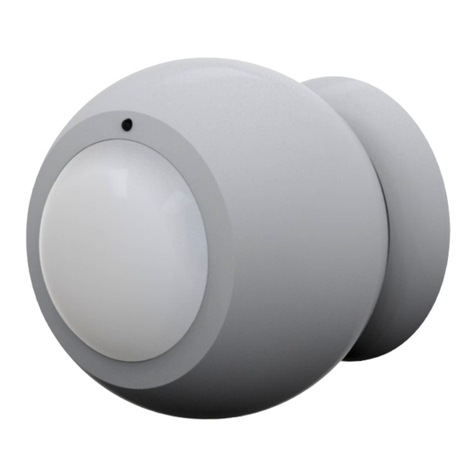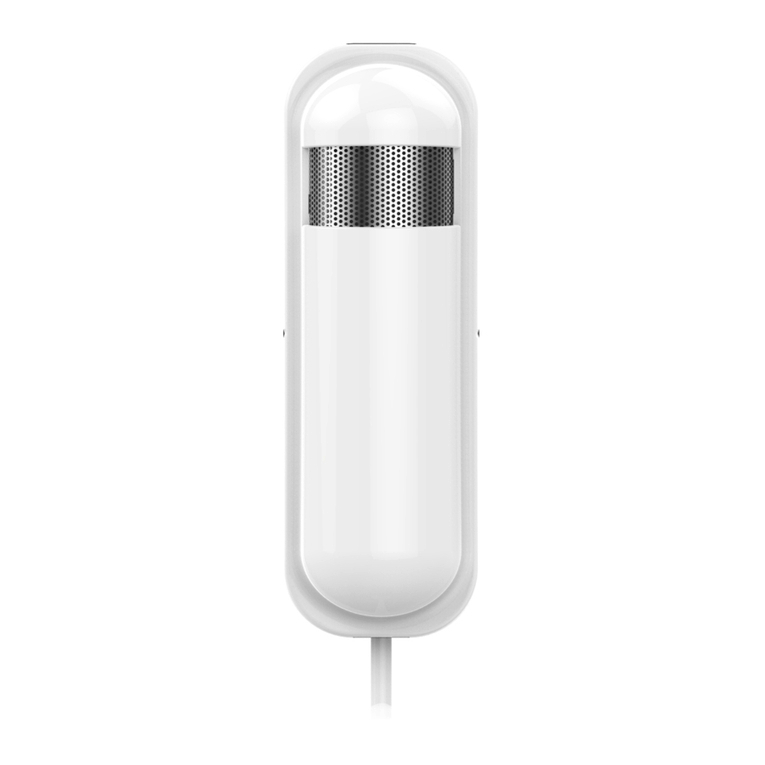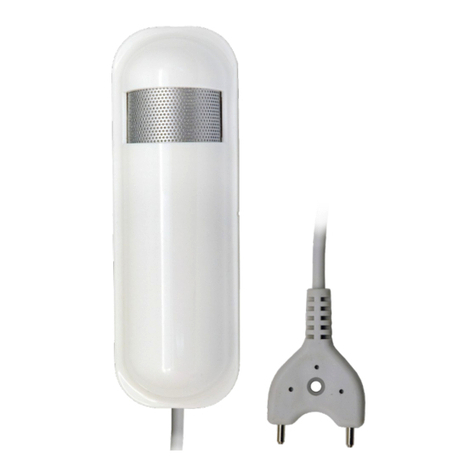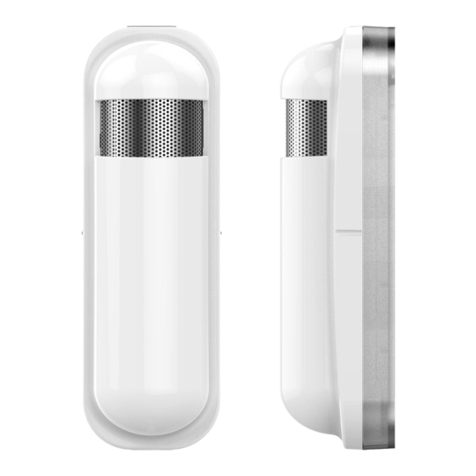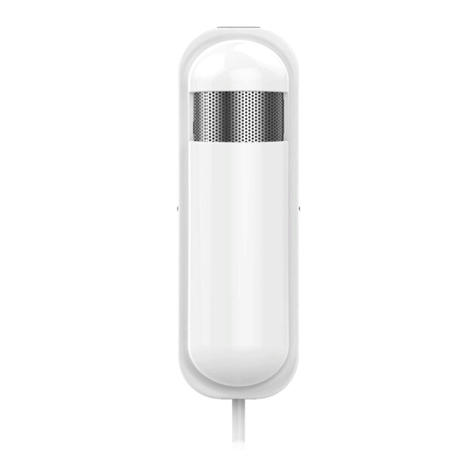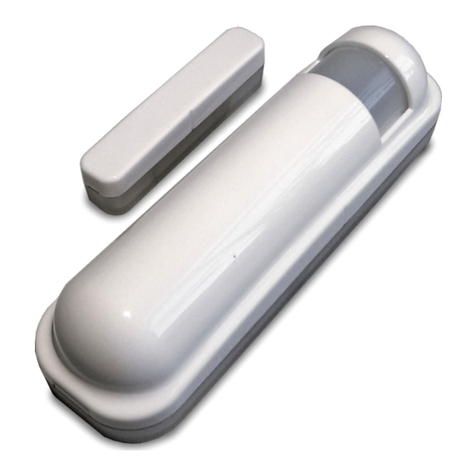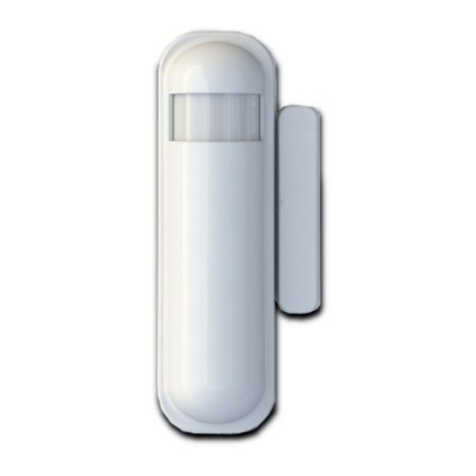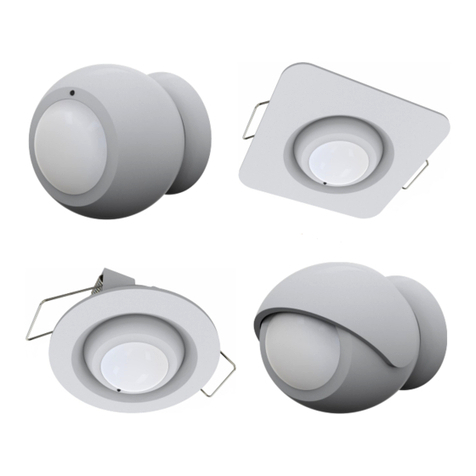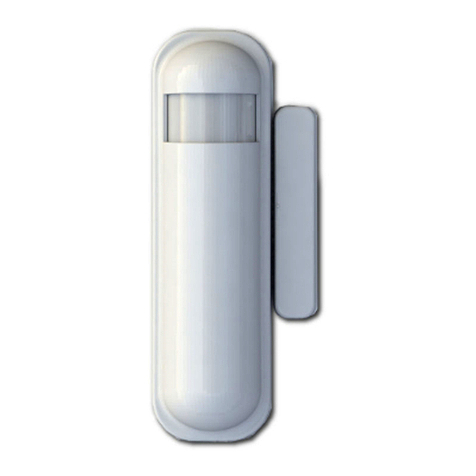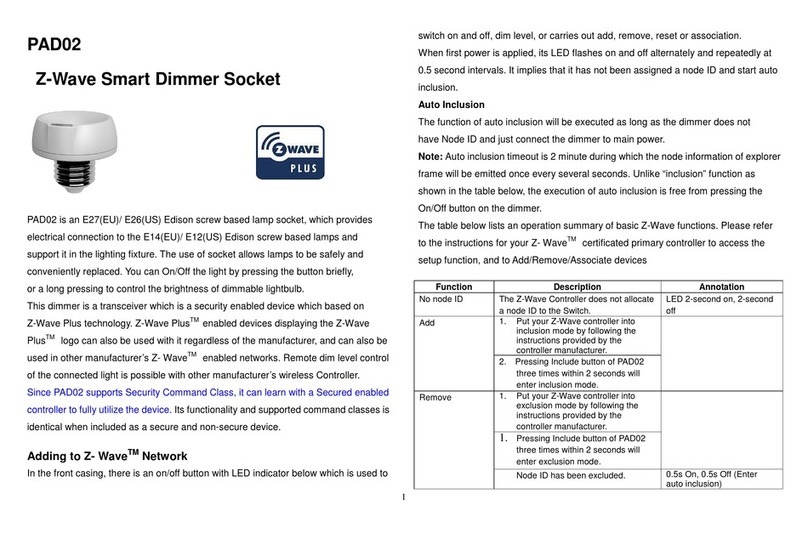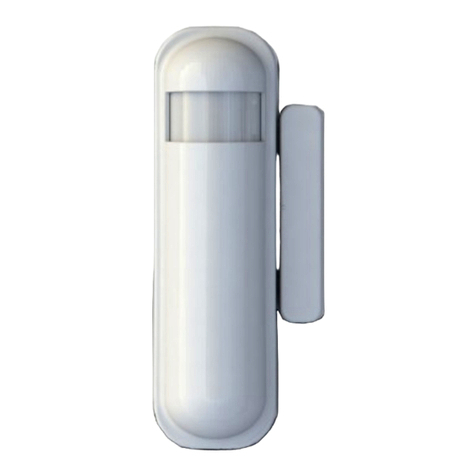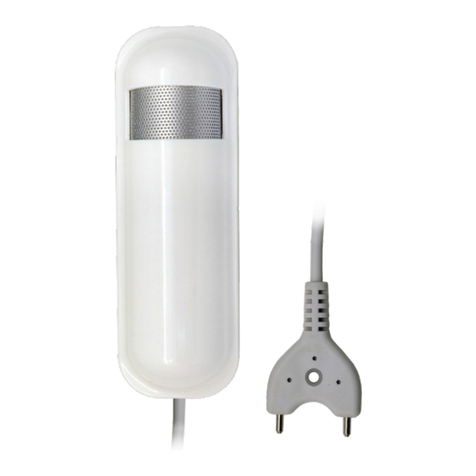Slim Multi-Sensor PSM01
The slim multi-sensor PSM01 has door/window, temperature and
illumination, 3 sensors function in one, based on Z-Wa eTM technology.
Z-Wa eTM is a wireless communication protocol designed for home
automation, specifically to remotely control applications in residential
and light commercial en ironments. The technology uses a low-power
RF radio embedded or retrofitted into home electronics de ices and
systems, such as lighting, home access control, entertainment systems
and household appliances.
This de ice is one component of the Z-Wa eTM sensor system and is
designed to work with all other Z-Wa eTM enabled de ices in a home
control network. The de ice adopt the Z-Wa eTM 400 series chip, when
your Z-Wa eTM network system is all made by Z-Wa eTM 400 series
de ices. The network system will ha e the ad antages as below.
•Concurrent multi-channel support reduces external interference.
•Better RF range, impro e about 10 meters in indoor.
•Support 100 Kbps transmit speed, speed up communication.
Adding to Z-WaveTM Network
There are two tamper keys in the de ice, one is in the back side,
another is in the front side. They ha e the same function. Both of them
can inclusion, exclusion, reset or association from Z-Wa eTM network.
In the first time, add the de ice into the Z-Wa eTM network. First, make
sure the primary controller is in the inclusion mode. And then power on
the de ice, just take out the insulation Mylar in the back side of the
de ice. The de ice will auto start the NWI (Network Wide Inclusion)
mode. And it should be included in 5 seconds. You will see the LED
light ON one second.
Function Descri tion
Inclusion
1. Ha e Z-Wa eTM Controller entered inclusion mode.
2. Pressing tamper key three times within 1.5 seconds
will enter inclusion mode.
3. After inclusion successful, the de ice will wake to
recei e the setting command from Z-Wa eTM
Controller about 20 seconds.
Exclusion
1. Ha e Z-Wa eTM Controller entered exclusion mode.
2. Pressing tamper key three times within 1.5 seconds
will enter exclusion mode.
Node ID has been excluded.
Reset
1. Pressing tamper key four times within 1.5 seconds
and do not release the tamper key in the 4th
pressed, and the LED will turn ON.
2. After 3 seconds the LED will turn OFF, after that
within 2 seconds, release the tamper key. If
successful, the LED will light ON one second.
Otherwise, the LED will flash once.
3. IDs are excluded and all settings will reset to
factory default.
1

